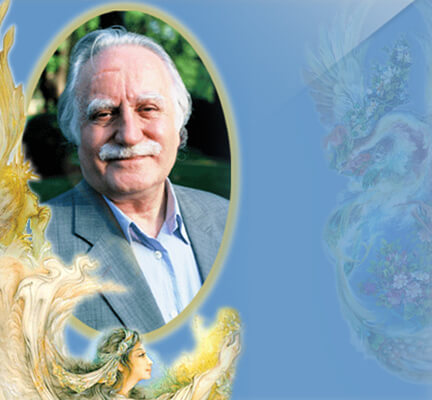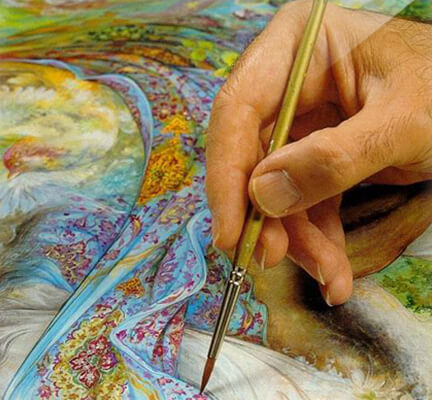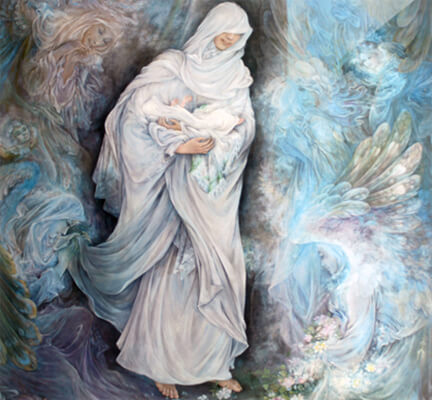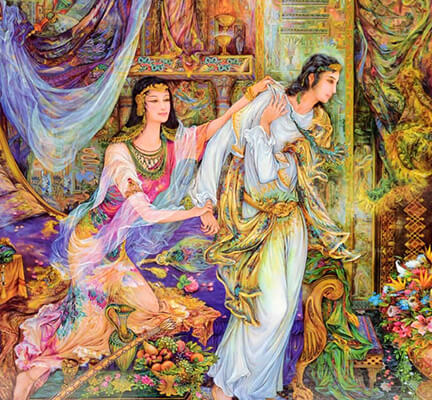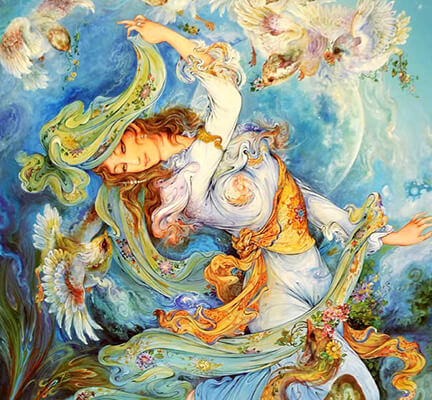Mahmoud Farshchian
Master Mahmoud Farshchian was born in Isfahan on January 24, 1930. Growing up, he was surrounded by many architectural masterpieces that gradually and subliminally sharpened his awareness of proportion, colour, and form. At the age of five, it became evident that his life would be devoted to art and painting. Mahmoud’s father, the owner of a leading carpet business, encouraged his interest in design and planted the seeds of art in Mahmoud’s heart.
While still in school, Farshchian was invited to learn painting from the famous masters of the time. After graduating from the Academy of Fine Arts in Isfahan, he travelled to Europe to study the works of Western artists. Upon his return to Isfahan, Mahmoud began working in the General Office of Fine Arts. He was later appointed to the position of administrator of National Arts. It was then that he joined the Faculty of Fine Arts of Tehran University as an art professor. It was there that he created many of his unique masterpieces.
Farshchian later moved to the United States and stayed in the New York metropolitan area. When he came to the United States, he brought with him many treasures which were welcomed by Bibliotheque Nationale, The British Library, Freer Gallery of Art, Metropolitan Museum, and Harvard University. His works continue to be exhibited in galleries and museums throughout Asia, Europe and the United States, as well as in private collections.
Master Farshchian, has achieved a distinctive style — his motif designs, his creation of round spaces, his smooth and powerful lines, and his creation of undulating colours. Farshchian’s works are a pleasing composition of both nobility and innovation. His themes are cultivated from classic poetry, literature, the Koran, Christian and Jewish Holy books, as well as his own deep imagination. His most outstanding works are based on human affections and moods, which appear most effectively in graceful faces and figures.
Farshchian is the founder of his own school in Iranian Painting, which adheres to classical form while making use of new techniques to broaden the scope of Iranian painting. He has brought new life to this art form and has freed it from the symbiotic relationship it has historically had with poetry and literature, to give it an independence it had not previously enjoyed. Master Farshchian has played a decisive role in introducing Iranian art to the international art scene.



